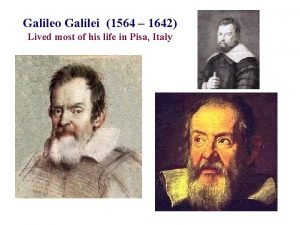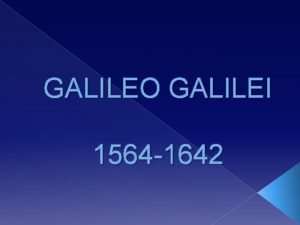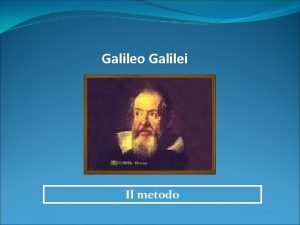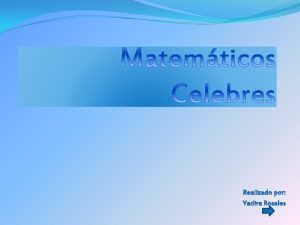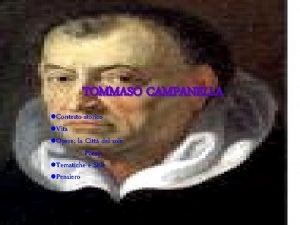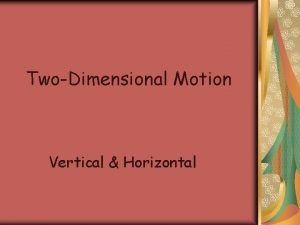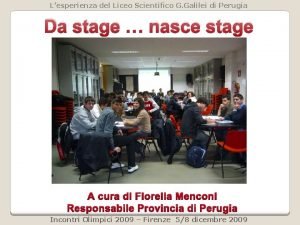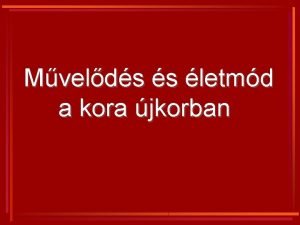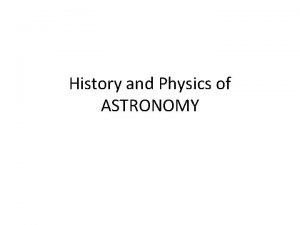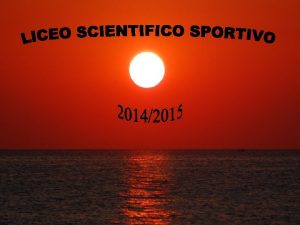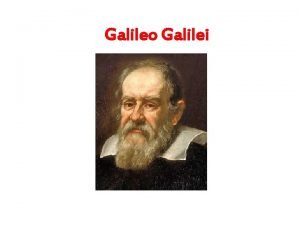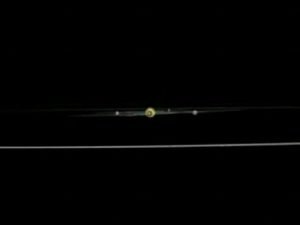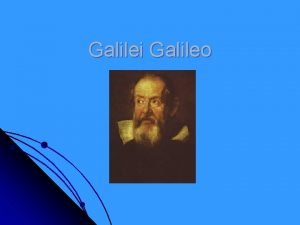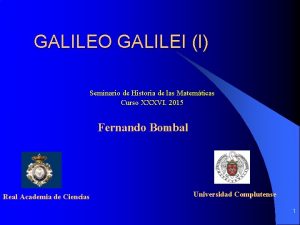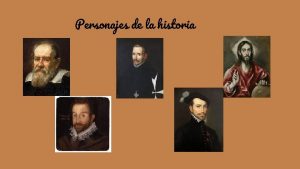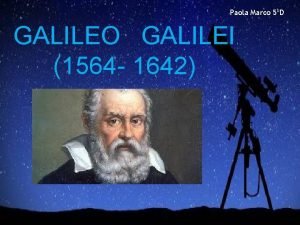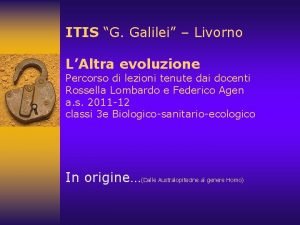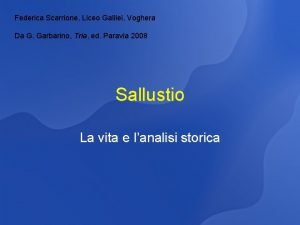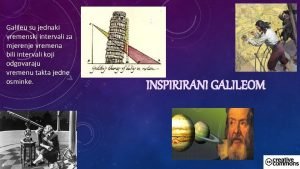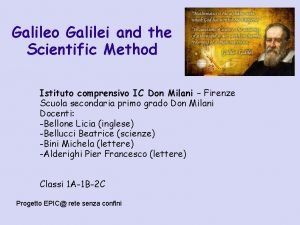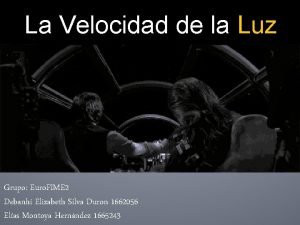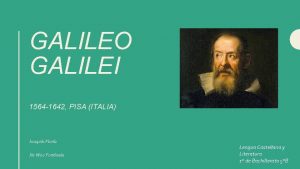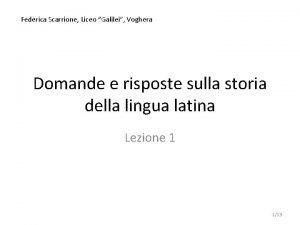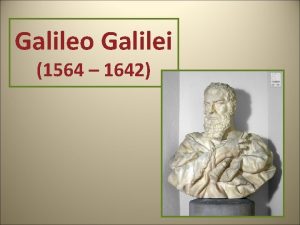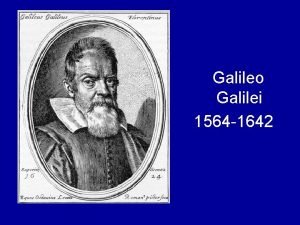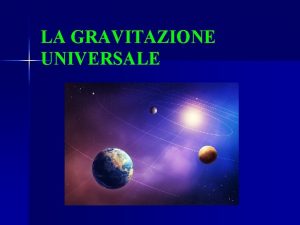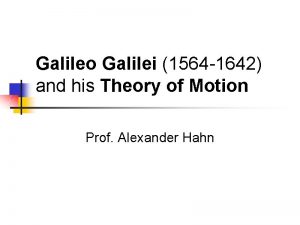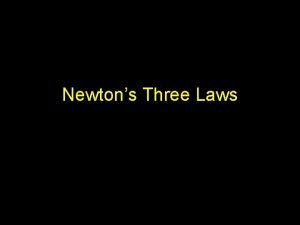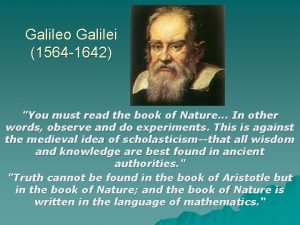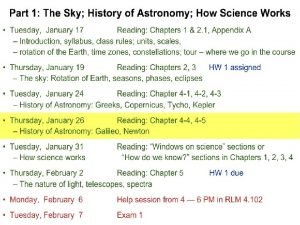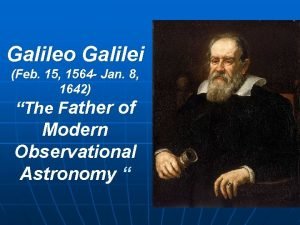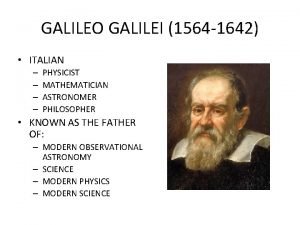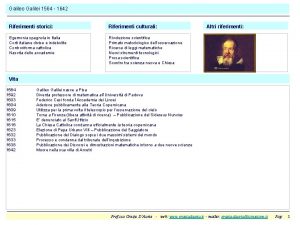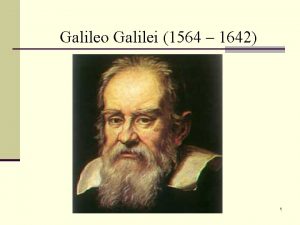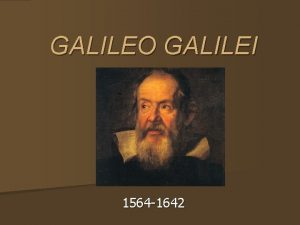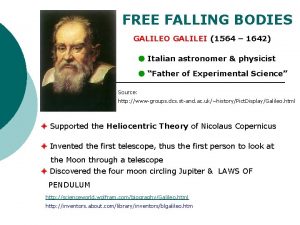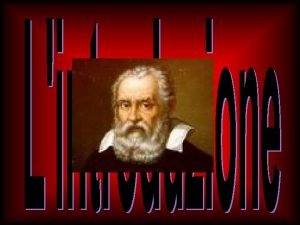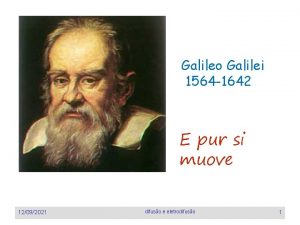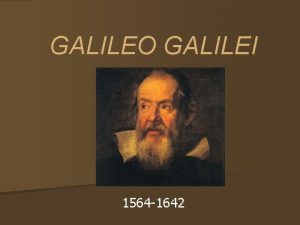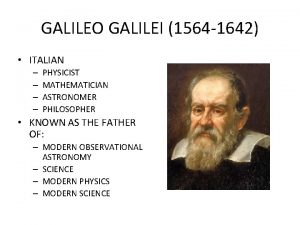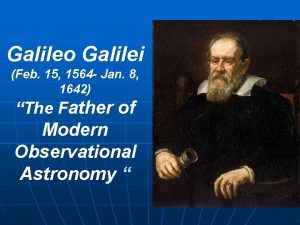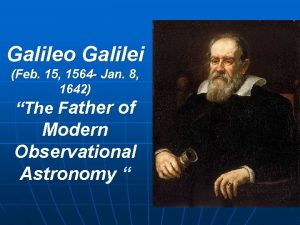Galileo Galilei 1564 1642 Lived most of his








![Selling the Cannocchiale (Telescope) “The power of my cannocchiale [telescope] to show distant objects Selling the Cannocchiale (Telescope) “The power of my cannocchiale [telescope] to show distant objects](https://slidetodoc.com/presentation_image_h/1f904a01266b87ea1cae81cc36e66c32/image-9.jpg)















- Slides: 24

Galileo Galilei (1564 – 1642) Lived most of his life in Pisa, Italy

Galileo Galilei (1564 -1642) by D. Robusti, 1606

Italy Pisa

Some Galileo Cartoons

Some Galileo Cartoons

Interesting historical facts about Galileo Galilei From the Appendix to A Brief History of Time by Stephen Hawking

Interesting historical facts about Galileo Galilei From the Appendix to A Brief History of Time by Stephen Hawking

Galileo’s Cannocchiale (Telescope)
![Selling the Cannocchiale Telescope The power of my cannocchiale telescope to show distant objects Selling the Cannocchiale (Telescope) “The power of my cannocchiale [telescope] to show distant objects](https://slidetodoc.com/presentation_image_h/1f904a01266b87ea1cae81cc36e66c32/image-9.jpg)
Selling the Cannocchiale (Telescope) “The power of my cannocchiale [telescope] to show distant objects as clearly as if they were near should give us an inestimable advantage in any military action on land or sea. At sea, we shall be able to spot their flags two hours before they can see us; and when we have established the number and type of the enemy craft, we shall be able to decide whether to pursue and engage him in battle, or take flight. Similarly, on land it should be possible from elevated positions to observe the enemy camps and their fortifications. ”

Galileo Discovered Some of Jupiter’s Moons Lawrence Hall of Science | © 2004 | from: http: //sunra. lbl. gov/ISE/new/planet/jupiter 1. html

“Medicei” Satellites Io Europa Ganymedes Callisto

Jovian (“Planets”) Moons

• • • Some of Galileo’s Many Discoveries & Inventions Astronomical Telescope Structure of the Moon surface Enormous number of stars invisible to the naked eye Nature of the Milky Way Existence of Nebulae Jovian Planets Evidence in support of Copernican system The thermometer The compass The pendulum clock

Observed Features of The Moon for the First Time • The surface of the moon is not a perfect sphere. • There are mountains and valleys and “perfect circles”.


Discovered Many New Stars Observed Many New Features of Our Galaxy

The Milky Way our galaxy you are here


Nebulae

Galileo Satellite NASA launched a satellite named “Galileo” in 1989. Its mission was to take photos of Jupiter. From: http: //starchild. gsfc. nasa. gov/docs/Star. Child/questions/question 61. html

Galileo Astronomy Timeline 1609: He built a 20 X telescope, discovered craters & mountains on the moon 1613: He discovered sunspots 1616: He was called to Rome & ordered to stop supporting Copernican theory 1633: The Inquisition denounced him 1638: He published "Discourses Concerning Two New Sciences", summarizing the principles of mechanics � 2001 by The Crimson Bird Book Shoppe, 29 Redmond Way, Stanfordville, NY 12581 USA http: //crimsonbird. com

Galileo was condemned by the Inquisition in 1633 1. “Vehemently suspected of heresy”, he is required to “abjure, curse and detest” those opinions 2. Ordered imprisoned, commuted to house arrest (likely because of his earlier friendship with the Pope) 3. The “Dialog” (his book that caused his main trouble) is banned. 4. All of his works, past and future, are forbidden

He was under house arrest for the last 14 years of his life. He remained active, but went almost completely blind. In that period, he Galileo wrote his final masterpiece “Discourses and Mathematical Demonstrations Relating to Two New Sciences “ (1638) which many science historians believe set the main foundation for Physics (at least for mechanics). Later, Newton made this foundation mathematically rigorous.

1992 Pope John Paul II acknowledged the Vatican's error in the condemnation of Galileo & gave him a full pardon
 1642-1564
1642-1564 1642-1564
1642-1564 Galileo sensate esperienze e necessarie dimostrazioni
Galileo sensate esperienze e necessarie dimostrazioni Aportes de johannes kepler
Aportes de johannes kepler Claudia aris
Claudia aris Contesto storico galileo galilei
Contesto storico galileo galilei Galileo vertical motion examples
Galileo vertical motion examples Liceo galileo galilei perugia
Liceo galileo galilei perugia Galileo galilei anatomia
Galileo galilei anatomia Galileo galilei contribution
Galileo galilei contribution Galileo galilei contribution
Galileo galilei contribution Liceo scientifico dolo
Liceo scientifico dolo Dove nacque galileo galilei
Dove nacque galileo galilei Bibliografia galileo galilei
Bibliografia galileo galilei Galilei lebenslauf
Galilei lebenslauf Galileo galilei aportaciones
Galileo galilei aportaciones Ocupacion de galileo galilei
Ocupacion de galileo galilei Logros galileo galilei
Logros galileo galilei Iti galileo galilei livorno
Iti galileo galilei livorno Liceo linguistico voghera
Liceo linguistico voghera Galileo galilei prezentacija
Galileo galilei prezentacija Galileo galilei scientific method
Galileo galilei scientific method Velocidad de la luz formula
Velocidad de la luz formula Cronologia de la vida de galileo galilei 1586
Cronologia de la vida de galileo galilei 1586 Liceo classico voghera
Liceo classico voghera
